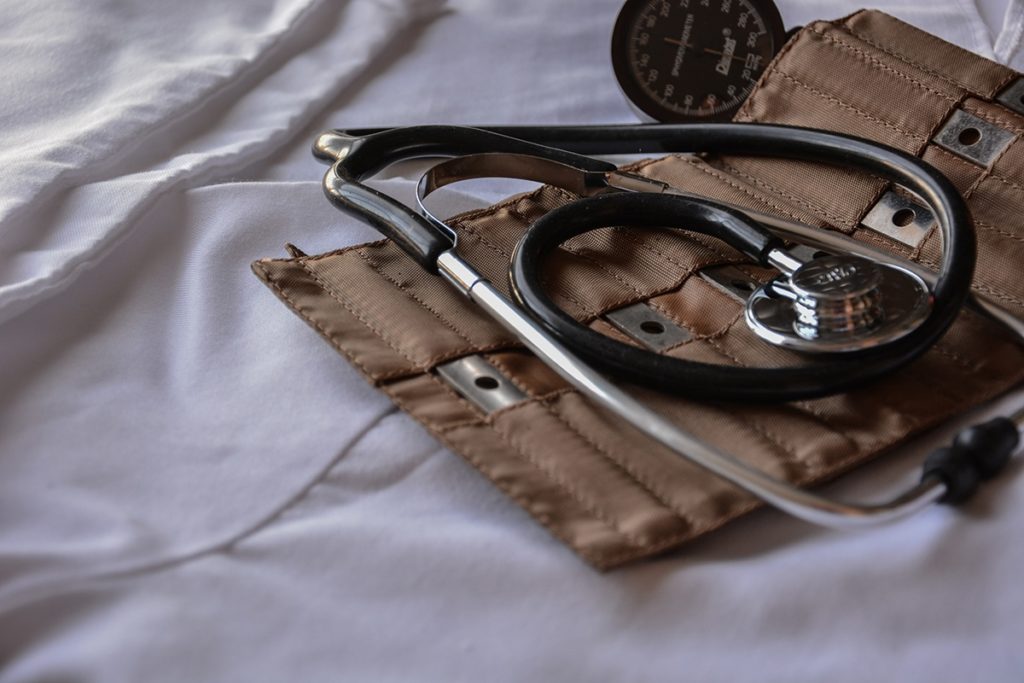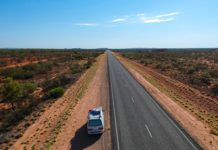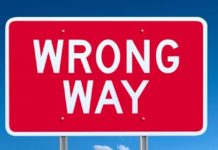
Australia, known for its stunning landscapes, vibrant cities, and unique wildlife, continues to be a dream destination for travelers worldwide. However, understanding the cost of travel in 2025 is essential for planning your trip efficiently. This article will break down the various expenses you can expect while traveling in Australia, including accommodation, transportation, food, activities, and more.
Table of Contents
Budget Before You Go
Airfare
Airfare will undoubtedly be one of the biggest expenses before you leave. Tickets prices change constantly during the year. Thus, there are 3 main periods:
- October to February (spring/summer & Australian holidays): ≤ £1200 return (including 1 stopover, good airline and 24h travel time)
- March to June (winter): ≤ £900 return (including 1 stopover, very good airline and 24 hours travel time)
- July to September (winter/autumn & European holidays): ≤ £1100 return (including 1 stopover, good airline and 26h travel time)
You can find cheaper options if you decide to have a few more stopovers.
Passport and Driver’s licence
To travel outside the European Union, you need a passport. To obtain or renew it, it is necessary to make a request to your town hall with supporting documents. The cost of a passport (1st request or renewal) is £75.50 if you apply for it online in the UK. The application is more expensive if you apply by paper form (£85). If you already have one, make sure it is valid for at least as long as the duration of your stay.
If your driver’s licence is not in English then you will need to obtain an international licence. The process is free in general but quite lengthy so be sure to make the request well in advance. You can also use a NAATI translator to get your licence translated.
Visa
To enter Australia, you will need a valid visa. Here is a list of your visa options for a trip to Australia :
- Tourist Visa (for 3 to 12 months) (eVisitor Visa Subclass 651 / Visitor Visa Subclass 600) : Free or $145 depending on the visa.
- WHV (for 1 year) (Working Holiday Visa / Subclass 417 & 462) : $650 (can be renewed under conditions)
⚠️ Make sure you apply for a visa from the official government website.
Health Insurance
Without insurance you risk exposing yourself to the true cost of treatment outside the European zone. Depending on the length of your stay and your trip (tourist, WHV) you will need to get the proper cover for your stay in Australia.
These insurances will cover you in the event of an accident or infectious disease. Your hospital costs, repatriation costs, accidents during the practice of certain sports (to be checked with the company), or your civil liability will be covered.
Note that some countries have reciprocal health agreement with Australia. Therefore nationals from those countries will benefit from Medicare in Australia (national healthcare system). Make sure to check this point before buying a cover.
💸 10% discount on your Insurance Policy
Find here all the information you need and get your 10% Go walkabout promo code for any policy.

Accommodation & Living Costs in Australia
Housing / Accommodation
- Campgrounds: If you are lucky enough to be able to drop anchor in a free camp, then take advantage of it! That’s what adventure is all about, living in the great outdoors in picturesque areas! You also have the possibility to pay for a caravan park which will allow you to enjoy at least hot showers, a laundry and a kitchen corner (about 20$/night and 70$/week).
- In your vehicle : You will have to find an authorized place to spend the night.
- Youth hostels: depending on the city and the period you book, rates can vary from $40/night (dormitory of 10) to $60/night on weekends. In general, a week varies between $120 and $250.
- Wwoofing & HelpX: Great alternatives for those looking to live with locals, with free food, laundry and accommodation in exchange for a few hours of work per week.
- Housesitting: allows you to stay in someone’s home while they are away, taking care of their property and pets. It’s a popular way for travelers to save on accommodation costs while exploring different parts of the country.
- Airbnb: For an entire home/apartment count around AUD 150 – AUD 350 per night. Price will wary based on location and size. For a private room, it will be cheaper (AUD 80 – AUD 150 per night). Staying with hosts, often includes local tips.
- Flat rental: Who wouldn’t dream of a flat overlooking the beach? With a deposit of between $200 and $1000 (depending on the owner), you can expect to pay approximately $350/week in rent (with roommates) to fully enjoy your holiday!
- Hotels: Of course you also have the option of spending your nights in hotels. Budget will vary between 120$ and well up to you… depending on your preferences.
Food and Dining costs
Buying groceries and cooking for yourself is the most economical choice: expect to spend A$100–140/week on staples (Aldi, Coles, Woolworths). Eating out costs:
- Fast food : A$15–25/meal
- Casual cafés & pubs : A$30–40/meal
- Mid-range restaurants : A$50–65/meal

Getting Around
Australia is a much larger continent than Europe. This means that you need to plan ahead and find the most suitable means of transport.
Lifts (or carpooling)
This is an almost free way of getting around, where you contribute to the fuel costs and meet many backpackers! Recommended for those thirsty for adventure. To do this, a quick look at the Facebook groups in Australia is welcome
Coach & Bus Passes
The network is extensive and efficient but often at the same price as the plane and the train. The two main companies are Greyhound and Premier Motor Service. For those who would mainly choose this means of transport, a Greyhound package is worth considering. In addition, here is an order of prices according to the destinations:
| Route / Company | Premier Motor Service | Greyhound (Advantage) |
|---|---|---|
| Melbourne – Canberra | – | 85 $ |
| Agnès Water – Byron Bay | 95 $ | 180 $ |
| Sydney – Melbourne | – | 120 $ |
| Sydney – Brisbane | 100 $ | 170 $ |
| Coober Pedy – Adélaïde | – | 180 $ |
| Sydney – Cairns | 300 $ | 510 $ |
Trains
In general, the journey time is several hours longer and the fare is the same as that of a bus or plane. That said, it is still much more comfortable for long journeys. And there are some iconic and famous train journeys in Australia like The Indian Pacific (Sydney to Perth), The Ghan (Adelaide to Darwin) or The Overland (from Melbourne to Adelaide).
Motorbike & private vehicle
One of the best adventures you can have is a motorbike trip, but it does have a few drawbacks (exposure to the weather, minimal luggage). This is why a car remains a great option! Whether you have a 4WD, a campervan or a classic car, the road is waiting for you!
Car & Campervan Hire
Compact cars : A$45–70/day off-peak; A$80+ peak
Campervans (2-berth) : A$70–100/day off-peak; A$110+ peak
Relocation deals : A$1–10/day if you’re flexible with pick-up/drop-off
🚐 Cheap Campervan Hire
Find the best deals on Motorhome Republic to rent a cheap van.
Domestic Flights
Fast and affordable, it allows you to get from one end of the country to the other in a short time. So, we invite you to take a look at airline platforms such as Skycanner, to find the best flight. To get an idea, count approximately: (return ticket)
Sydney – Melbourne: $100
Melbourne – Cairns: $300
Sydney – Perth: $400
Melbourne – Alice Spring: $500
Perth – Darwin: $400
Fuel costs
- Average Price: $1.85 – $2.20 per liter. Prices vary by region and distance from major cities.
Activities & Sightseeing
Many activities are free in Australia. Go to the beach, surf, visit cultural centres, explore the streets, markets of cities, or even climb a mountain and discover a waterfall. There are many ways to explore the country and do activities for free or a small fee. But to give you a rough idea about costs here:
- Popular Sites: $20 – $50 entry fee. Examples include Sydney Opera House tours, and Melbourne Aquarium.
- National Parks: $11 to $25 entry fee per vehicle. Fees for entry and camping.
Sample Budgets
You want to go on a road trip, and if you have the ability, arrive with the maximum of funds in the Australia! The most important thing about a road trip is your vehicle. If you want to travel to isolated places, prefer a 4WD rather than a campervan. Il will allow you to access every corner of Australia.
The budget for a vehicle will depend on many things, such as the period of purchase, the vehicle you pick, the city where you purchase, its general state etc. Another option is to rent a vehicle for your road trip, it will give you the option to pick it up somewhere and drop it off in another city. It is also a great option if you are only looking for a short road trip in Australia (East coast or West coast for example).
Here are sample weekly budgets for different road-trip styles in Australia (all amounts in AUD):
| Profile | Transport | Accommodation | Food | Fuel (100 km/day) | Activities & Extras | Total/week (A$) |
|---|
| Ultra-Budget | Personal vehicle amortization: A$20 | Free camping | A$100 (groceries) | A$125 | A$30 | A$275 |
| Backpacker (camping) | Campervan relocation: A$70 | Powered campsite: A$210 | A$120 (self-cater) | A$125 | A$50 | A$575 |
| Minimal Comfort | Car rental: A$420 (A$60 × 7 days) | Shared housing/hostel bed: A$160 | A$140 (mix) | A$125 | A$70 | A$915 |
| Enhanced Comfort | Motorhome rental: A$1,050 (A$150 × 7 days) | Powered campsite: A$280 | A$200 (mix) | A$125 | A$100 | A$1,755 |
Notes:
– Fuel cost based on 70 L/week at A$1.79/L (national average, April 2025)
– Campervan relocation deals assume A$10/day flexibility on pick-up/drop-off
– Accommodation “shared housing” refers to a room in a share-house; “powered campsite” assumes no free-night discounts.
– Adjust these figures to your itinerary, season and travel flexibility for a more accurate personal budget.
Read also : Road Trip in Australia – Budget
Budget Touring in Australia
Here are some options of tours in Australia and their costs:
- Fraser Island (K’gari) 3 nights & Skydiving: from $650
- Seaplane flight: from $250
- Whitsunday 1 day & scuba diving: $250.
- Day Tours: Minimum $120 (few hours / basic) but can go up to $250. Guided tours to places like the Great Barrier Reef or Blue Mountains.
- Multi-Day Tours: minimum $550 up to $1,500 (or more!). Includes accommodation, meals, and activities.
Budget for a WHV in Australia
Here is an estimate for a WHV when traveling on the roads. Expenses will be as follow:
- Purchase of a vehicle: $5000 (at least)
- Fuel: $150/week
- Food: $60/week
- WHV Cost: 650$
- Health Insurance: $400 per year
- Tour: $500 to $1000
- Activities (restaurants, bars, parties…): $150/week
- Plane tickets not included
Count approximately $20 000 per year (can be higher or lower depending on your life style, activities etc).
Budget for holidaying in Australia
For the lucky ones who are travelling in Australia for 3 weeks just to enjoy the country, here is an idea of the budget to plan:
- Vehicle rental: $150/day
- Fuel: $120/week (depending on kms)
- Tourist visa: Free
- Travel Insurance: $200
- Tours : minimum $1000 – 1500
- Food & Activities (restaurants, clubs, pubs …): $500/week
- Plane tickets A/R – $2500
Traveling in Australia in 2025 can be as affordable or luxurious as you choose. By planning ahead, understanding the typical costs, and making smart choices, you can enjoy all that this stunning country has to offer without breaking the bank. Whether you’re exploring the outback, lounging on pristine beaches, or diving into vibrant city life, Australia promises an unforgettable adventure.
See you soon on the roads!


























